Disclaimer: As an Amazon Associate I earn from qualifying purchases. Therefore, we may collect a share of sales from the links on this page, at no extra cost to you!
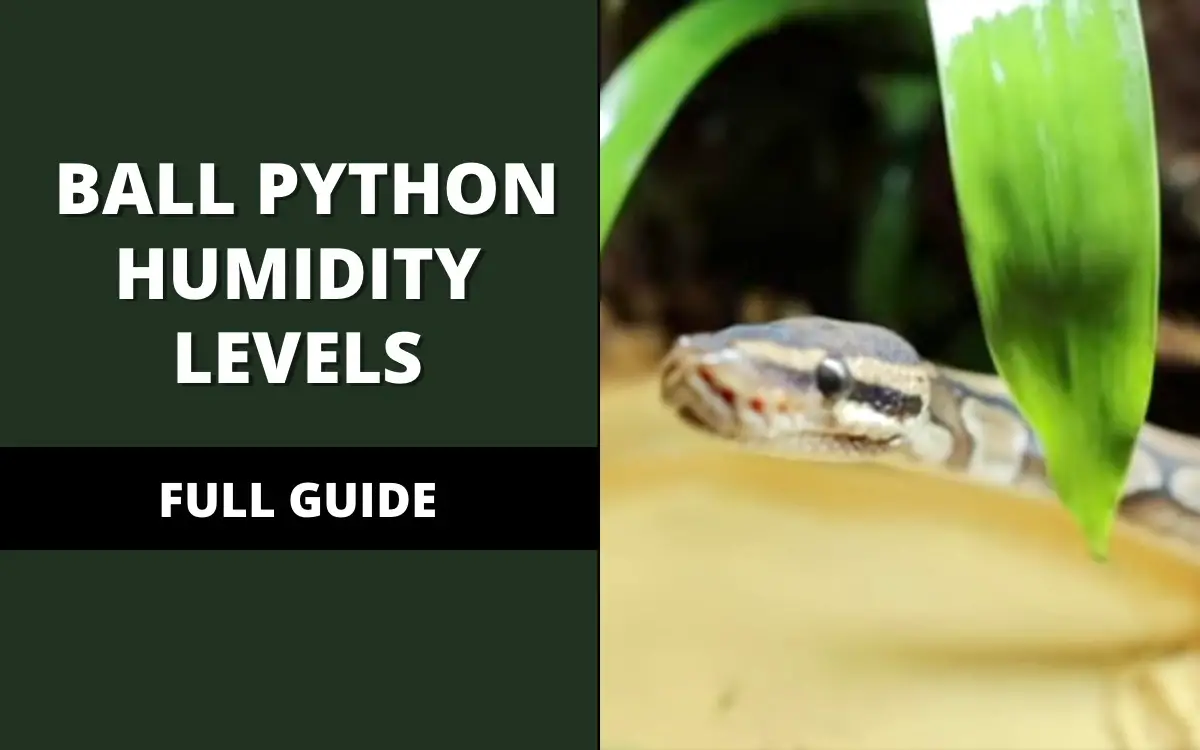
Did you know that the humidity levels in your home can have a significant impact on the health and well-being of your ball python? In order to create an environment that is conducive to your snake’s health, it is important to understand the ideal humidity levels and how to achieve them.
This article will provide an in-depth look at the ideal humidity levels for ball pythons as well as tips on how to adjust the humidity in your home accordingly. So, whether you are a first-time snake owner or a seasoned pro, read on for all you need to know about keeping your ball python healthy and happy!
Jump to..
What's the Ideal Humidity Level for Ball Pythons?
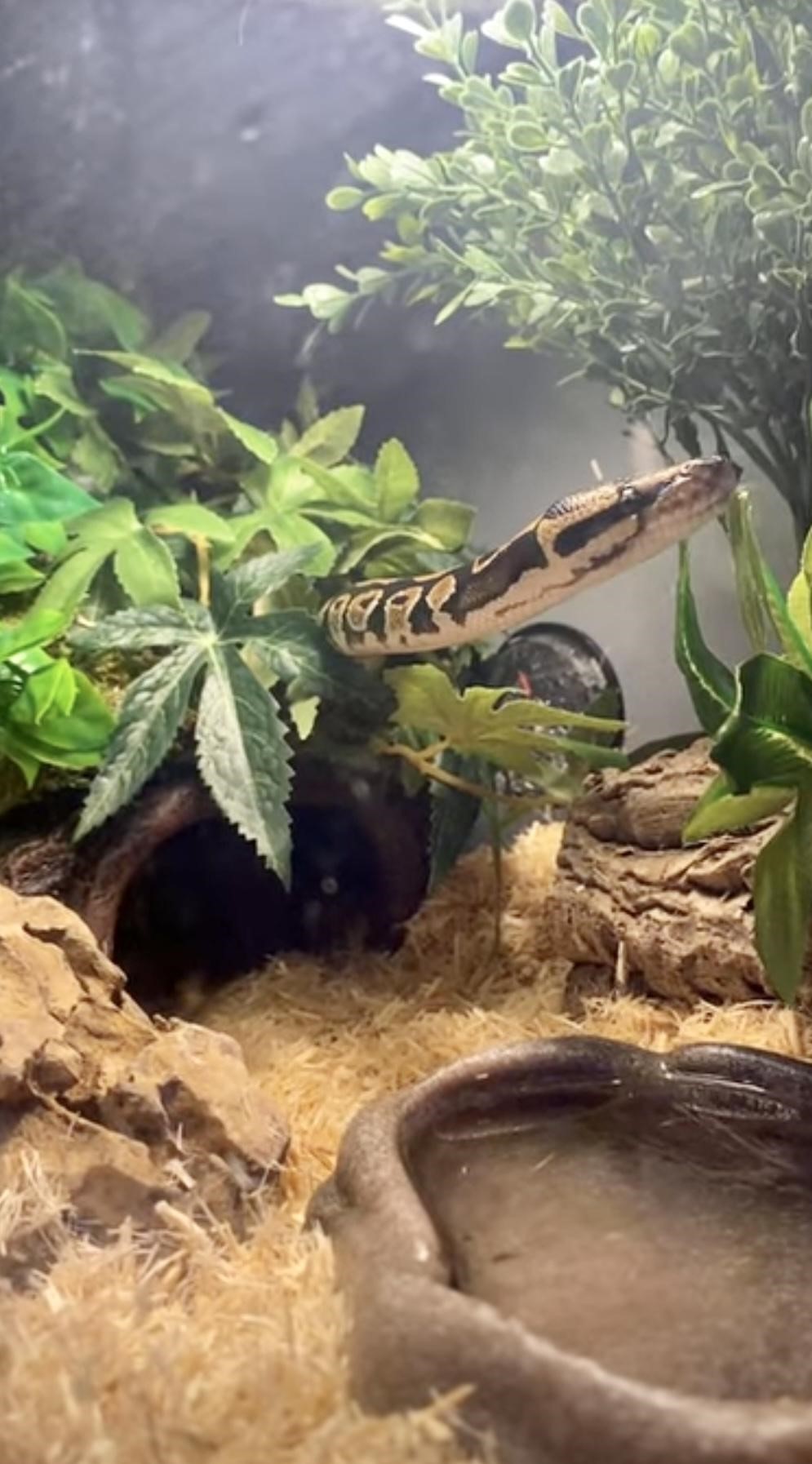
The ideal humidity level for ball pythons is 55 to 70 percent. A humidity level that is too low can cause health issues such as dehydration and skin problems, while a humidity level that is too high can lead to respiratory infections and other illnesses. Therefore, it is important to keep the levels in this optimal range.
How to Achieve the Ideal Humidity Level
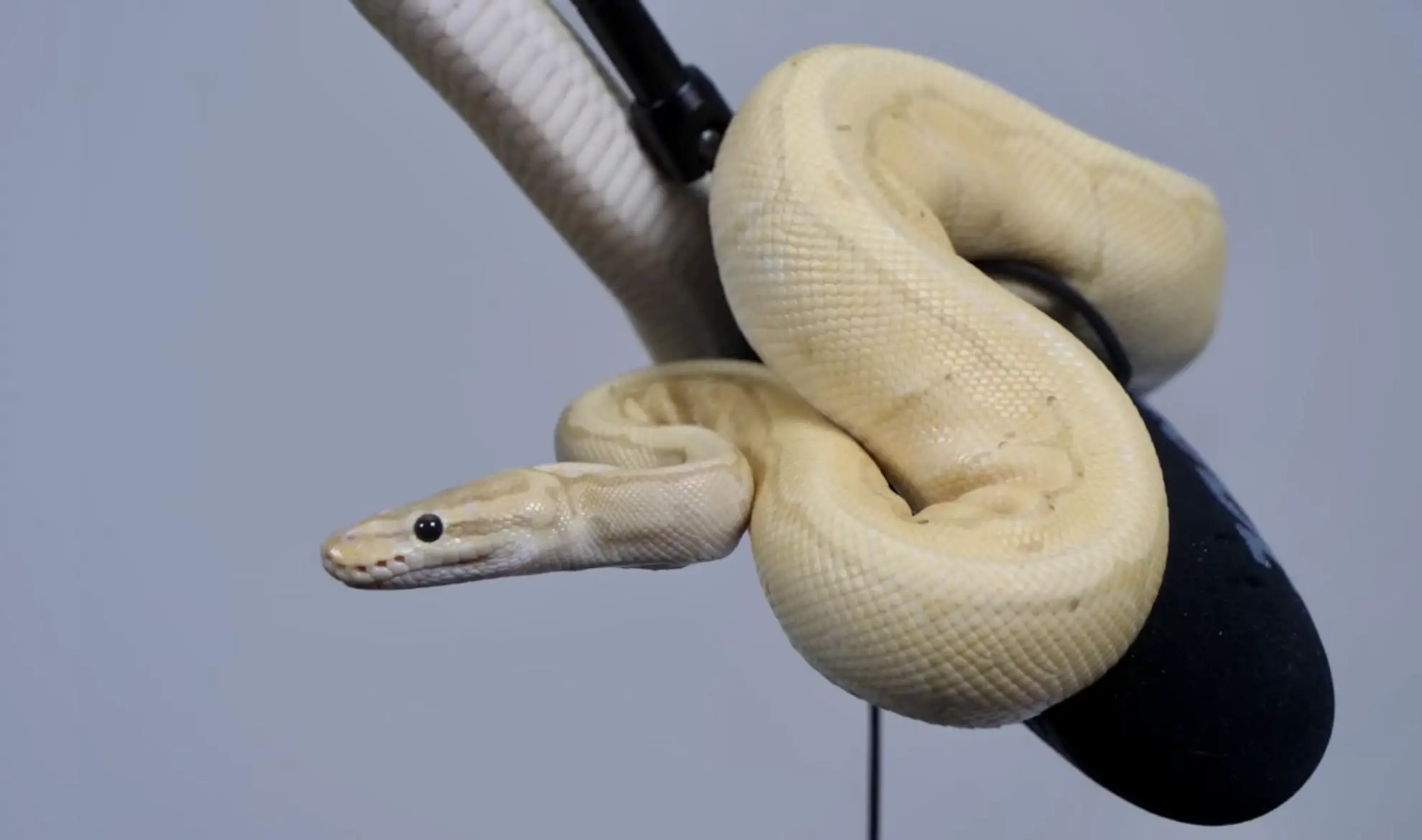
In order to achieve the ideal humidity level for your ball python, you will need a few items. A hygrometer is a device that measures the relative humidity in your home and should be placed in your snake’s habitat.
You should also purchase a quality substrate such as coconut husk or cypress mulch for your snake’s enclosure as this will help to maintain the correct levels of humidity. Some of the other ways include:
1. Installing a Humidifier to Add Moisture to the Air in Your Home.
During the warmer months, you may also need to mist your snake’s enclosure with water to help maintain the correct humidity levels. Your snake may enjoy a daily misting as it helps to keep them cool, hydrated, and comfortable.
2. Provide Plenty of Hiding Places in Your Snake's Enclosure.
This ensures that your ball python has an area where they can go if the humidity levels become too low or high. Imagine how your snake would feel if they had nowhere to escape from the elements!
3. Install a Temperature Controller and/or Timer
These items are essential for helping regulate temperatures in your snake’s enclosure, which directly affects humidity levels. A temperature controller prevents fluctuations in temperature while a timer ensures that the lights turn off and on at set intervals so that the temperature and humidity levels remain consistent.
4. Monitor the Humidity Levels
Regularly checking on the humidity levels in your snake’s enclosure is key for maintaining the correct environment. Make sure to use a hygrometer and monitor the levels regularly to ensure that everything is within the optimal range. If you notice any significant fluctuations, adjust the environmental conditions accordingly.
5. Clean the Enclosure Regularly
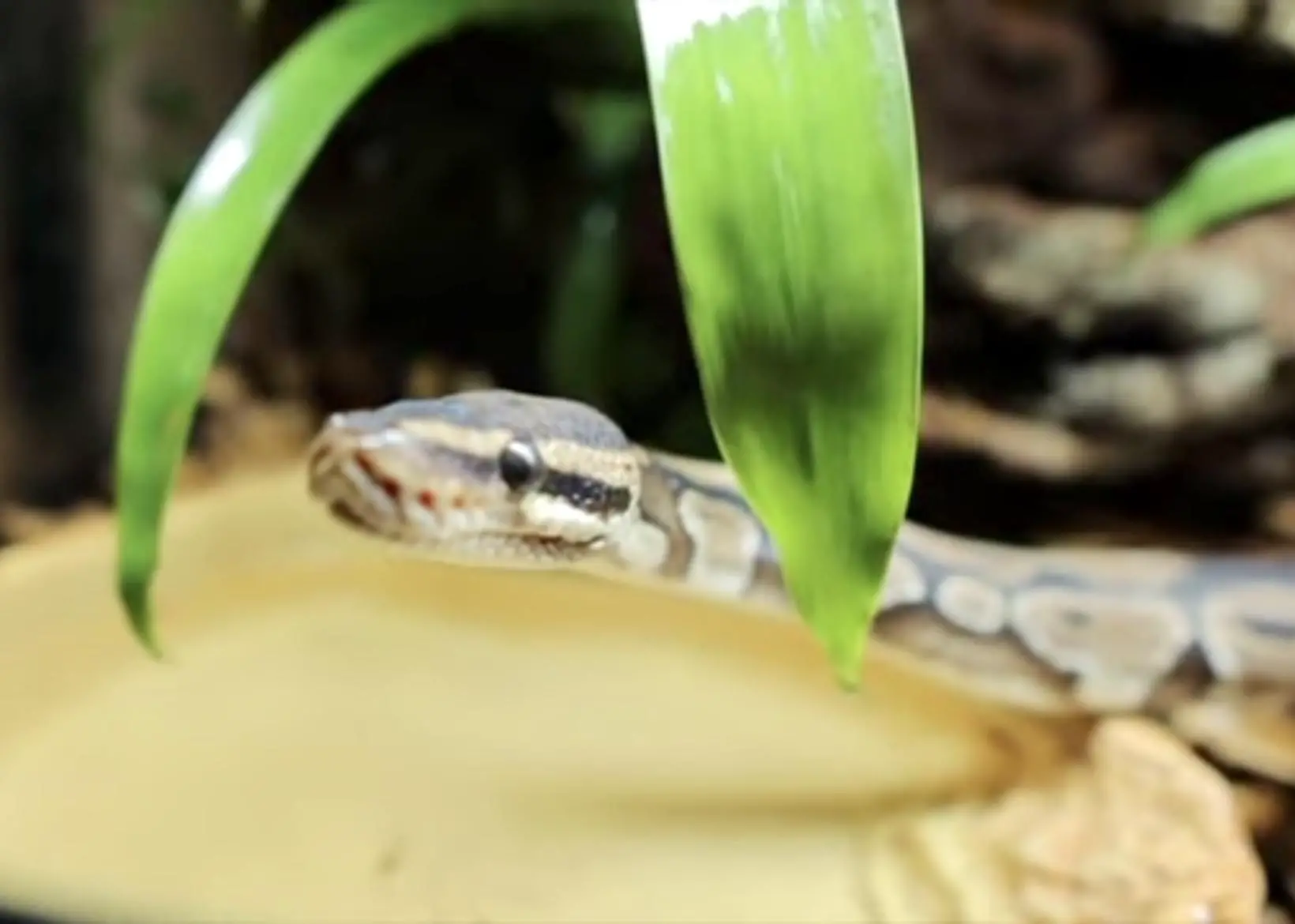
This helps to keep the environment in your snake’s home clean, safe, and healthy. Make sure to remove any debris or droppings that may accumulate over time as this can impact humidity levels.
6. Regularly Check the Substrate
The substrate in your snake’s enclosure is essential for regulating humidity levels. If you find that the substrate has become dry, mist it with warm water to bring it back to its optimal level.
Overall, knowing and understanding the ideal humidity level for ball pythons is an important part of creating a safe and comfortable environment for them. By following the tips above, you can ensure that your snake is happy and healthy!
What Temperature Is Too High for a Ball Python?
It is important to keep your ball python’s habitat at the right temperature. Temperatures that are too high can cause stress, respiratory issues, and other health problems. The ideal temperature range for an enclosure should be between 78 and 82 degrees Fahrenheit (25-28 Celsius).
Anything higher than this can cause discomfort in your pet. If the temperature in your ball python enclosure is too high, it can be dangerous and even life-threatening. It is important to keep an eye on the temperature of the habitat and make sure that it stays within a safe range.
It is also worth noting that different parts of the enclosure should have different temperatures. The hot spot should be around 88-90 degrees Fahrenheit (31-32 Celsius), while the cool side should range from 78-82 degrees Fahrenheit (25-28 Celsius).
This allows your ball python to regulate its own temperature by moving between these two areas. A basking light or heat mat can be used to provide a hot spot, and a ceramic heating element can be used to provide a cooler area.
What Temperature Is Too Low for Ball Pythons?
The ideal temperature for your ball python is between 58-80° F in the daytime, and not lower than 68°F during the night times. Keeping your python’s home too cold can be dangerous and can lead to a range of health issues, such as respiratory infections and decreased appetite.
Ensure that you always have a reliable source of heat in your enclosure and that the temperatures don’t drop too low. If you have trouble controlling the temperature in your snake’s home, consider investing in a thermostat so that you can keep an eye on it.
At night time, if the temps do drop below 68°F, then there is no need to be concerned, but if it’s happening during the daytime, then it may be worth looking into. If you find that your python’s home is too cold for a prolonged period of time, then you should take steps to rectify this issue as soon as possible.
Your snake’s health and well-being are paramount, and ensuring their environment is at the right temperature is an important part of this.
Do Ball Pythons Need to Be Misted?
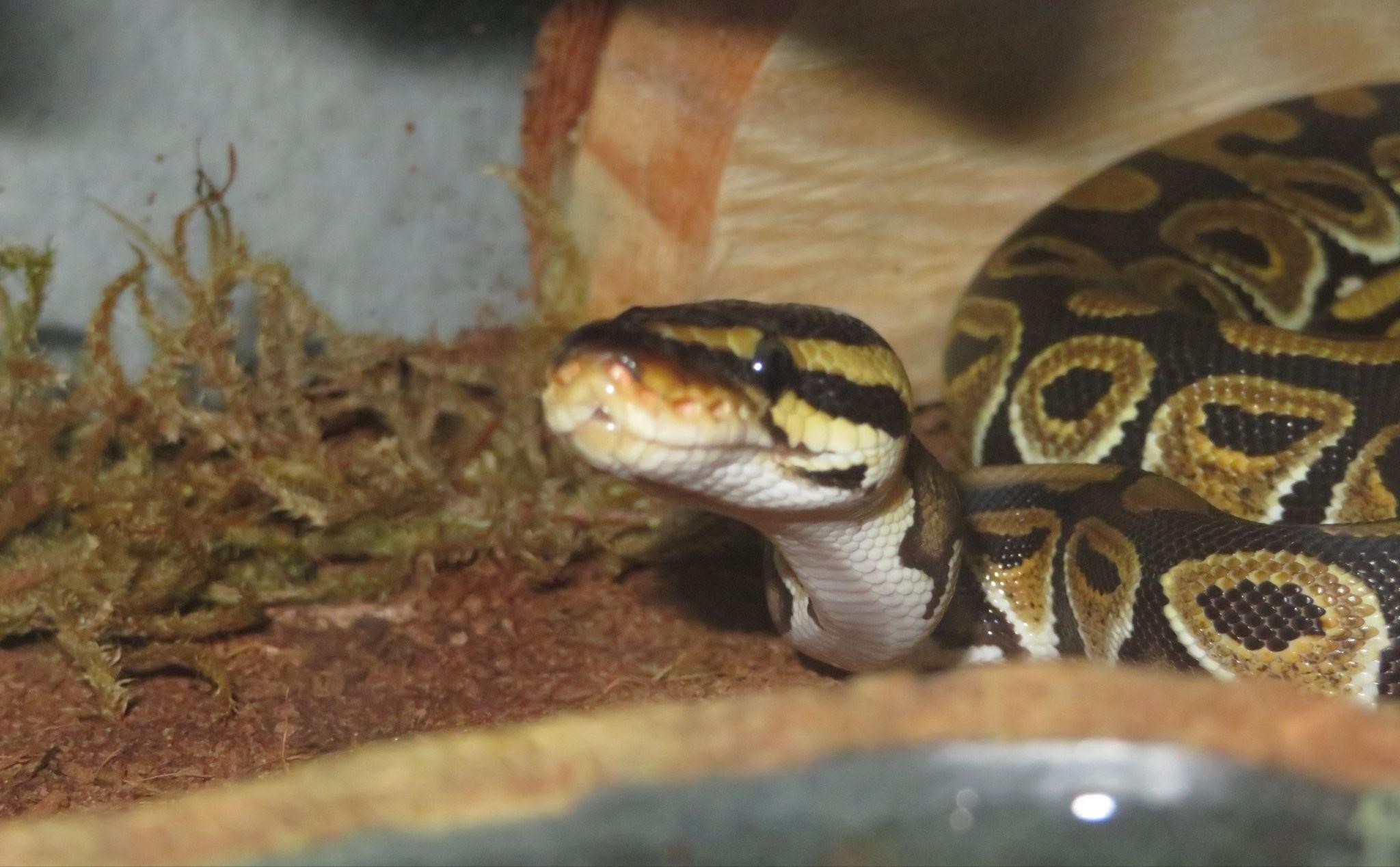
Misting is one of the most important elements in maintaining ideal humidity levels for your Ball Python. However, it must be done correctly to be effective. Proper misting should be done twice a day (once in the morning and once at night) and should cover all areas of the enclosure evenly. The amount of mist you use will depend on the individual enclosure, so it’s important to pay attention and adjust accordingly.
For added humidity, you can also use a humidifier or a water bowl in your Ball Python’s enclosure. A water bowl should be large enough for the snake to soak its entire body and be cleaned regularly to prevent bacteria growth. If using a humidifier, make sure to keep it at a safe distance from your Ball Python and turn it off when not in use.
In addition to misting, there are also other ways of achieving optimal humidity levels for your ball python. It’s important to choose the correct substrate for your enclosure, as certain substrates can hold more moisture than others.
The most common substrates for ball pythons are aspen bedding, cypress mulch, and coconut coir. Additionally, you can also use a humidity hide or damp sphagnum moss to increase the humidity levels in your enclosure.
Finally, make sure to inspect your Ball Python’s enclosure regularly for any signs of mold or mildew, and adjust your humidity levels accordingly. With the proper care, you can easily keep your Ball Python’s enclosure at ideal humidity levels for its health and happiness!
What to Do When When My Ball Python Is Shedding?
When a ball python is shedding, it’s important to help the process along by providing humid areas for them. The humidity should not exceed 70% as this can lead to respiratory issues. Spot clean soiled substrate and provide water bowls in both the dry areas and humid hides. It is also useful to increase the ambient temperature slightly when shedding; this will help the ball python to relax, which can aid in shedding.
Provide multiple humid hides with moist substrate and/or damp moss or sphagnum peat. When possible, provide a soaking area – a deep enough bowl of water that the snake can submerge its entire body if it desires. Allow your ball python to find its own preferred areas, as they may prefer different levels of humidity depending on the time of year and their own individual needs.
If your ball python appears to need assistance with shedding, you can gently help by soaking it in room temperature water or using a damp cloth. It’s important to be very gentle when handling your snake during this time.
You should never pull at the skin, as this can cause serious injury to your pet. After soaking or using a damp cloth, increase humidity in its enclosure so it can finish shedding without any further problems.
The key is to be patient and provide the right environment for your ball python when it’s time for them to shed; once you understand their needs, this process should go smoothly.
Potential Side Effects of Incompetent Conditions for Ball Pythons
When it comes to ball python humidity levels, maintaining an appropriate environment is key. Without proper maintenance, incorrect humidification can have devastating side effects for your pet. High or low humidity levels can cause a variety of health issues, including dehydration, respiratory problems, and skin infections. If you find that your ball python is exhibiting any of these symptoms, it’s essential to take steps to adjust their environment accordingly.
Inadequate humidity can lead to dehydration and cause the ball python’s body mass to decrease significantly. The animal may also look shrunken or have sunken eyes as its muscles shrink from lack of water. Low moisture levels also make it difficult for your pet to shed its skin, leading to troublesome accumulations of old and growing scales.
On the other hand, too much humidity can cause the ball python’s environment to become damp or even wet. This increases the risk of your pet developing respiratory problems, as well as skin infections caused by mold and bacteria. The moisture can also lead to a build-up of excess bacteria in the enclosure, which can further impair your reptile’s health.
It’s important to remember that ball pythons are very sensitive to their environment and need a specific balance of humidity levels to stay healthy. By monitoring your pet’s living conditions closely and adjusting its environment as needed, you can help ensure that your ball python remains in optimal health. By doing so, you can help them avoid the potential side effects of incompetent conditions.
Best Tools for Humidifying a Ball Python Enclosure
Humidifying your ball python enclosure is essential to keeping it healthy and happy. There are a variety of tools you can use to achieve the ideal humidity levels for your pet.
The most common method for providing extra moisture in a ball python’s enclosure is to use a misting system, such as Reptile Fogger or Ultrasonic Misting System. Both of these systems will generate a fine mist in the enclosure, providing just the right amount of humidity without getting your pet wet. These systems are easy to use but can be expensive so it is important to choose one that fits your budget and still offers good quality.
Another popular option for providing extra humidity is to use a reptile humidifier. This device works in much the same way as a misting system, but it uses an electric fan to blow moist air into the enclosure instead of using water. These devices are usually more affordable than misting systems and can be used to maintain steady humidity levels over time.
Finally, you can also use a humidifier attachment for your ball python’s heat lamp. This device attaches to the top of the light and disperses moisture into the enclosure while they bask in the warmth, providing them with just the right amount of humidity without getting wet.
No matter which tool you choose, make sure it is designed specifically for a ball python enclosure and follow the manufacturer’s instructions for use. With a little research and preparation, you can easily find the right humidifying tool to maintain the ideal level of humidity in your pet’s enclosure.
Conclusion
Maintaining the right humidity levels in your ball python’s enclosure is essential for keeping them healthy and happy. With the right tools and a bit of knowledge, you can provide your pet with an environment that meets their needs and minimizes potential health risks. By regularly monitoring your pet’s living conditions and adjusting the environment accordingly, you can ensure that your ball python will continue to thrive.
